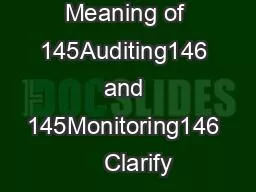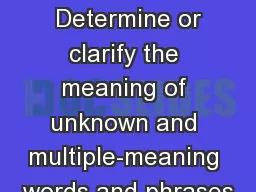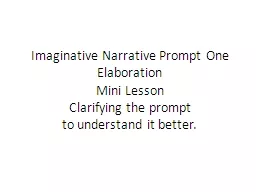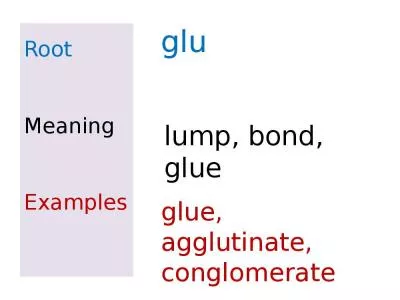PDF-Defining the Meaning of 145Auditing146 and 145Monitoring146 Clarify
Author : elena | Published Date : 2021-10-01
Involves routine formal communication to the Board and Management Monitoring Monitoring is an on process usually directed by management to ensure processes are working
Presentation Embed Code
Download Presentation
Download Presentation The PPT/PDF document "Defining the Meaning of 145Auditing146 a..." is the property of its rightful owner. Permission is granted to download and print the materials on this website for personal, non-commercial use only, and to display it on your personal computer provided you do not modify the materials and that you retain all copyright notices contained in the materials. By downloading content from our website, you accept the terms of this agreement.
Defining the Meaning of 145Auditing146 and 145Monitoring146 Clarify: Transcript
Download Rules Of Document
"Defining the Meaning of 145Auditing146 and 145Monitoring146 Clarify"The content belongs to its owner. You may download and print it for personal use, without modification, and keep all copyright notices. By downloading, you agree to these terms.
Related Documents














